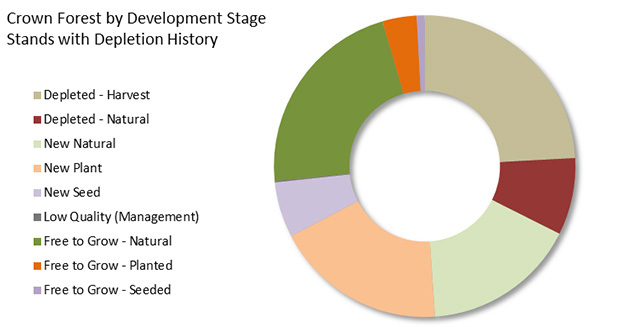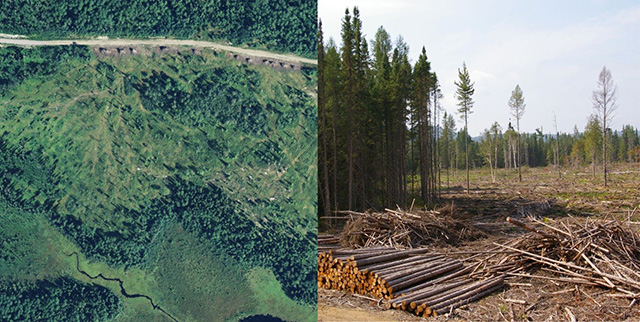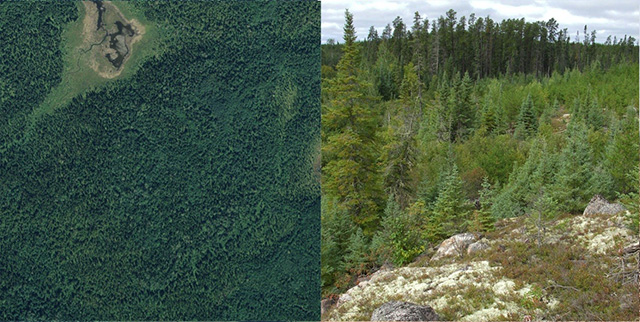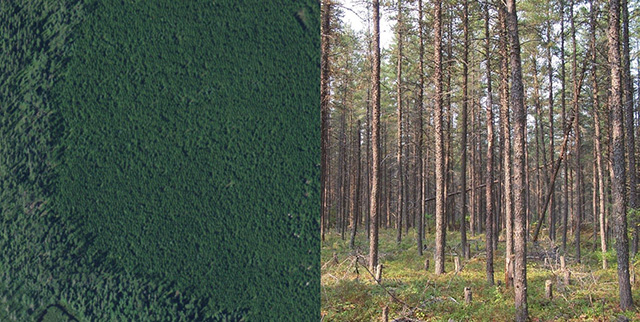This page is no longer current and is provided for archival and research purposes.
Development stage
What is development stage?
The term development stage refers to the current stage growth and development of a forest stand. This classification provides a way of tracking the silvicultural progress of a forest stand, starting with a recently depleted (by harvest or natural processes) through a young initiated stand and finally a successfully renewed stand.
There are several pathways a depleted stand can follow that include both natural and artificial regeneration options. The assessment of whether a stand is classed as “free-to-grow” or successfully renewed is determined through a silvicultural effectiveness monitoring survey.
In the Forest Information Manual (FIM 2009), development stage is described as the current state of growth and development for a productive forest stand. The MNRF has been receiving detailed spatial silviculture data since 2002, allowing for detailed tracking of forest change. The column containing area with a depletion history includes fire, harvest, salvage, blowdown and severe insect mortality since 2002 for available Crown forest.
Area of crown managed forest by development stage
| Development stage | Total area | Managed forest with depletion history |
|---|---|---|
| Depleted–Harvest | 811,111 | 549,758 |
| Depleted–Natural | 834,438 | 188,056 |
| New Natural | 670,945 | 376,058 |
| New Plant | 741,055 | 419,550 |
| New Seed | 199,902 | 135,333 |
| Low Quality (Management) | 212,378 | 3,316 |
| Free to Grow–Natural | 21,405,139 | 502,464 |
| Free to Grow–Planted | 1,364,600 | 83,531 |
| Free to Grow–Seeded | 329,025 | 19,208 |
| Shelterwood/Selection Stages | 527,825 | – |
| Total Area | 27,096,419 | 2,277,273 |
Crown forest by development state stands with depeletion history

Development stage classes:
Recently depleted–harvest
Forest recently disturbed by harvest and has received no regeneration/renewal treatment. Examples are FRI image of a harvested area and a ground level view of a harvested area.

Forest area depleted by harvest can remain in this class for several years, until a treatment is applied (moves to new plant or new seed) or the area is declared natural (new natural). 3% of the area within the Crown managed forest is in this development stage.
Recently depleted–natural
Forest recently disturbed by natural causes and has received no regeneration/renewal treatment. Examples are FRI image of a forest fire and a ground level view of a forest depleted by fire.

Forest area depleted by natural causes (fire, severe weather and insect damage) can remain in this class for several years, and can move to a harvest or salvage category (depleted harvest) or may remain as natural until it is assessed for free to grow. 3% of the area within the Crown managed forest clearcut silvicultural system is in this development stage.
New natural
Forest recently renewed by natural regeneration, but not yet assessed for renewal success. Examples are of a naturally renewed area, from the air (FRI image) and from the ground.

Forest area within the recently depleted development stages can follow a natural or artificial renewal pathway. Allowing growth by natural means is a commonly utilized method of forest renewal. 2% of the area within the Crown managed forest is in this development stage.
New plant/new seed
Forest recently renewed by artificial regeneration, but not yet assessed for renewal success. Examples are of a planted area, from the air (FRI image) and from the ground.

Recently depleted forest area is often planted or seeded. This treatment can include mechanical or chemical site preparation followed by tree planting or seeding. The most commonly planted trees in Ontario are Jack Pine and spruce. 4% of the area within the Crown managed forest is in these development stages.
Free-to-grow natural
Forest recently renewed by natural regeneration and assessed as successfully renewed. Example is of a naturally regenerated area assessed as free-to-grow, from the air (FRI image) and from the ground.

Forest areas that were regenerated successfully by natural means. Since most area in the forest is mature with no known depletion history, 79% of the Crown managed forest is in this development stage.
Free-to-grow plant/seed
Forest recently renewed by artificial regeneration and assessed as successfully renewed.4% of the area within the Crown managed forest is in these development stages. Example image is of a planted area at free-to-grow, from the air (FRI image) and from the ground.
